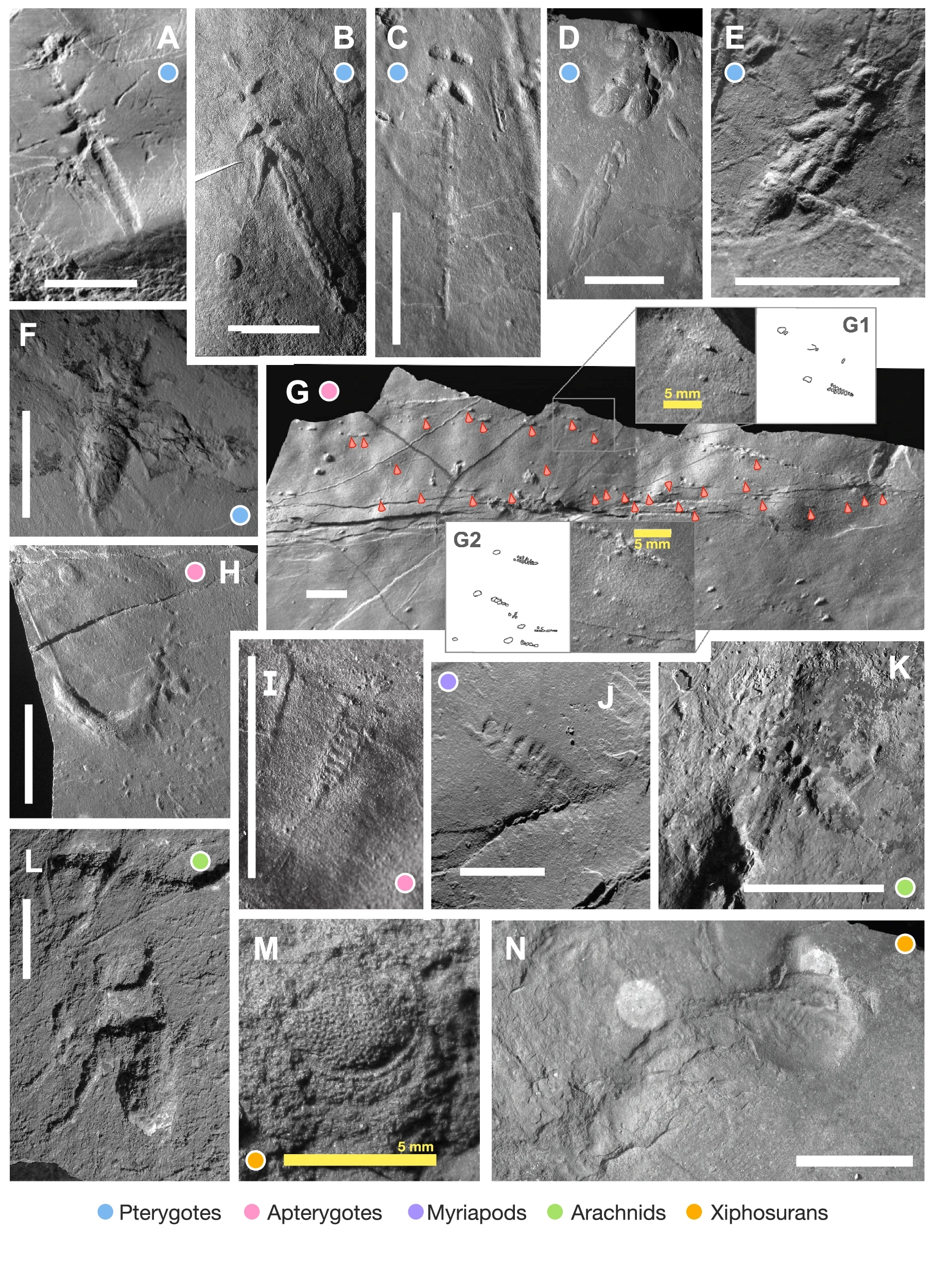The Pennsylvanian might make up a hefty chunk of one of Earth’s most important periods, the Carboniferous, but we know relatively little about the land ecosystems that existed in its earliest days. Now, thanks to the discovery of an “exceptionally preserved” fossil site in Massachusetts, researchers are beginning to fill in the gaps.
The site, known as Lantern North, is part of the Wamsutta Formation, which dates between around 320 to 318 million years ago. It’s been classed as a Lagerstätte, a name given to sites with top-tier levels of fossil preservation and diversity.
And for good reason – Lantern North really does have the lot. The team of researchers that uncovered the site found body fossils, and trace fossils like footprints, of 131 different species, ranging from insects, to arachnids like spiders and scorpions, to reptiles, amphibians, and a whole host of plants.
“This site gives us an unprecedented look at a terrestrial ecosystem from a crucial time in the evolution of life on land,” lead author Richard Knecht told the Harvard Gazette.
Take the discovery of a full-body impression of a whip scorpion species, Inmontibusichnus charleshenryturneri. According to the researchers, such fossils from this time period are “extremely rare” and this one is believed to be “the first record of its kind that can be unquestionably attributed to a whip scorpion tracemaker,” they write in the study describing the find.

The whip scorpion fossil (K).
But it’s not just about the number of unique fossils – the researchers also uncovered evidence of how the organisms living within this ecosystem behaved and interacted with each other.
“The exceptional preservation of delicate impressions and traces allows us to reconstruct behaviors and ecology in ways not usually possible with body fossils alone,” said co-author Jacob Benner. “We can see how these early terrestrial communities functioned as integrated ecosystems.”
“We’re seeing evidence of complex plant-insect interactions and some of the earliest appearances of major animal groups that went on to dominate terrestrial habitats,” added Knecht.
One such example of this was the discovery of what could be the earliest evidence of insect oviposition – the act of laying eggs using a tube-like organ known as an ovipositor. Previous finds had placed it later in the Pennsylvanian, but lesions characteristic of oviposition found on the fossils of species of Cordaites – an extinct group of 30-meter (100-foot) tall trees – suggest the behavior could be around 14 million years older than previously thought.
It’s hoped that with continued study of Lantern North, similar discoveries could be made in the future, with the authors suggesting it will serve as a “key reference” for reevaluating and expanding our understanding of this little-studied, but hugely important period of Earth’s ecological history.
The study is published in Nature Communications.
Source Link: “Exceptional” 320-Million-Year-Old Fossil Ecosystem Could Hold Earliest Signs Insects Laid Eggs